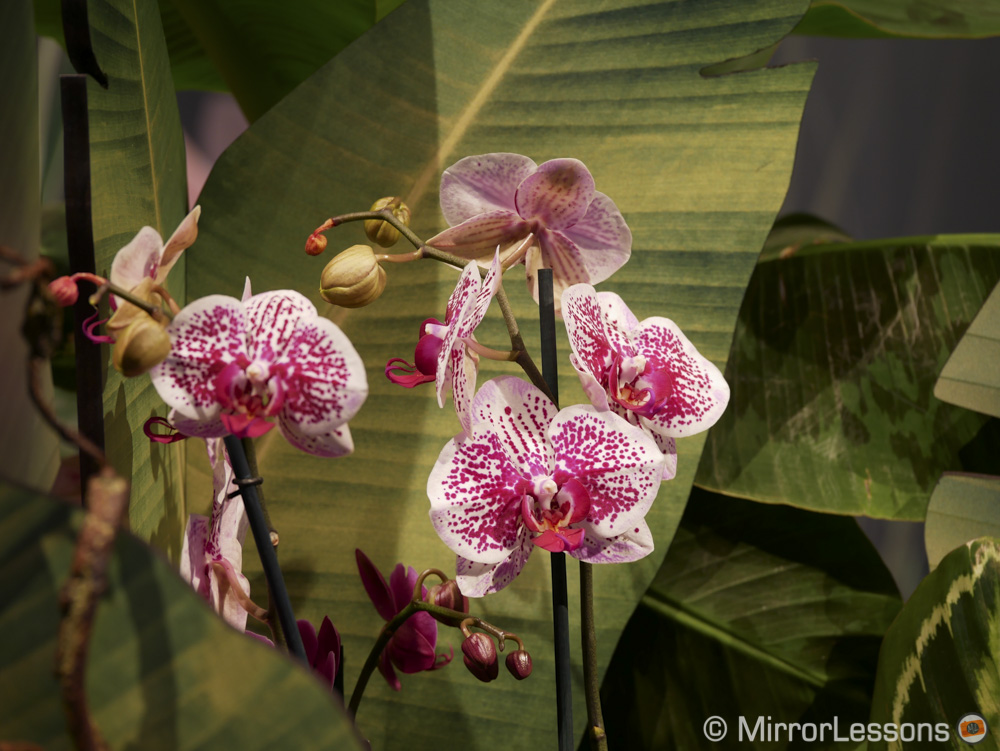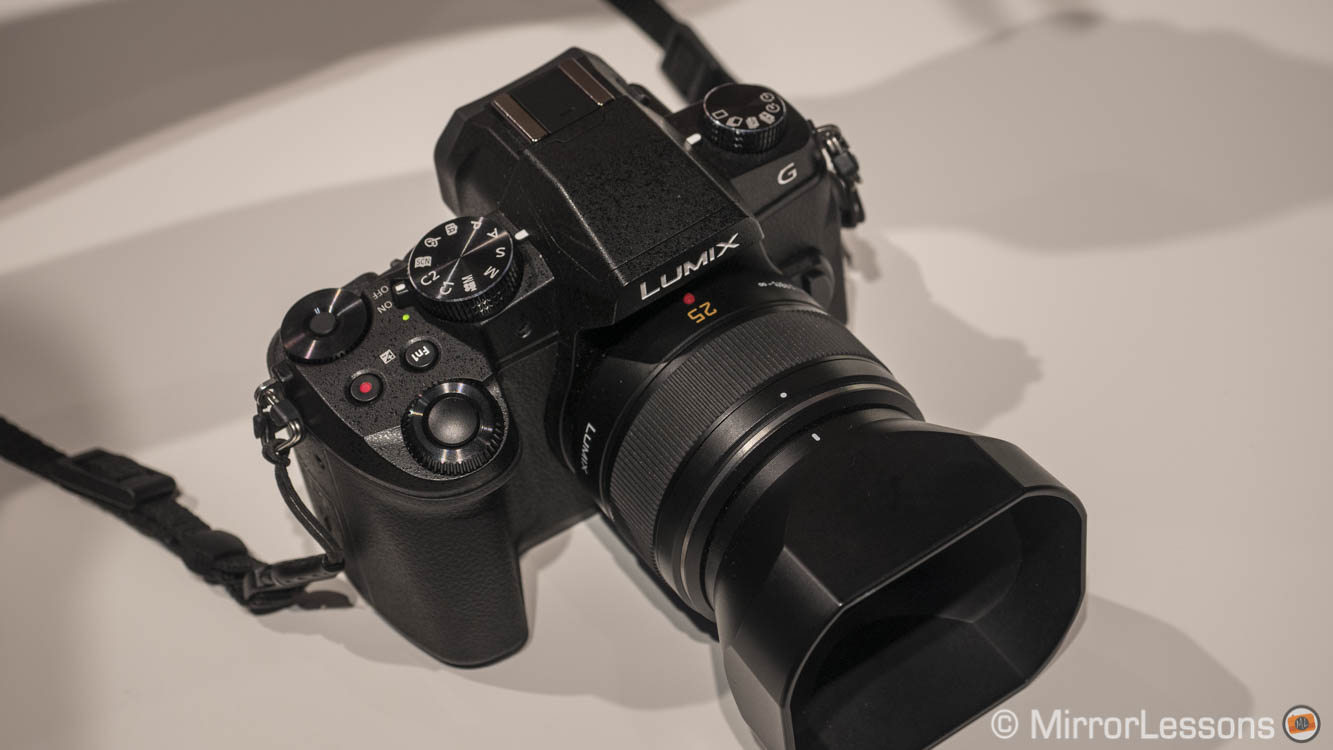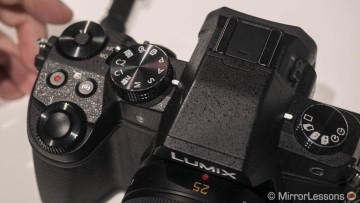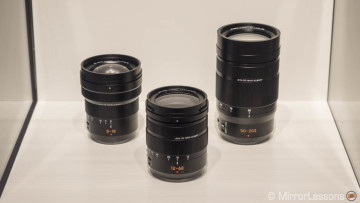The Lumix G85 is clearly a camera that was announced because users were expecting it. It doesn’t bring anything particularly new to the table but like the Lumix GX85 before it, combines Panasonic’s latest technology into a very attractive package. We get a robust body with weather sealing, 5-axis stabilisation, Dual IS and a new mechanical shutter that solves the shutter shock problem. The good ergonomics and the extra options for video found on the Lumix G7 remain.
We had the chance to see the camera and take a few pictures with it but being a pre-production model, we cannot publish full resolution samples. Below you will find our hands-on video followed by a recap of our first impressions, as well as some product images.
A big “thank you” to Mark Baber of Panasonic UK for letting us try out a pre-production sample of the Lumix G85 / G80!
Note: the G85 is the name for the US market. The camera is called G80 in Europe, G81 in Germany and G8 in Japan.
Our first impressions in a nutshell:
- The G85 body feels very similar to the G7 except for the more robust design and weather sealing. It is slightly heavier because of the magnesium alloy body. The camera doesn’t feel as “plasticky” as its predecessor.
- Very minor upgrades to the design include a slightly enhanced grip and an indent on the rear to open the LCD monitor more easily. You find the C1 and C2 Custom modes on the main dial. The flash button has been moved to the side of the EVF.
- The viewfinder has slightly more magnification at 0.74x instead of 0.70x. To be honest, I didn’t notice a difference.

- The camera features the same 16MP sensor as the GX85 (no AA filter). It also inherits the same shutter mechanism with an electromagnetic drive that frees the camera from shutter shock issues. ISO sensitivity is 200 to 25600 and the maximum shutter speed is 1/4000s. With the electronic shutter, it goes up to 1/16000s and offers a silent mode.
- The 5-axis stabilisation sensor is a updated version to the one found on the GX85. It works in conjunction with the optical stabilisation of select Lumix lenses and should provided an extra stop of compensation. Panasonic calls this updated stabilisation Dual IS 2. I couldn’t test how effective it is because the lenses require a firmware update to be compatible with Dual IS 2.

- Continuous shooting speed is slightly faster than the G7 (9fps instead of 8fps). With Continuous AF the max. speed available is 6fps.
- The camera uses the same contrast detection AF system with DfD (Depth from Defocus) technology. It felt faster than the G7 judging from the brief shots I took (for both stills and video). I expect it to be on the same level as the GX85 which is also improved in comparison to the G7.
- Unsurprisingly we find 4k video at 30fps and all the 4K Photo options we know from previous Lumix cameras. You have the Cine-Like profiles and a microphone input.
- Concerning 4K Photo, there is an update for the Post Focus mode: you can now use Focus Stacking by merging the frames automatically or manually select the ones to include in the stack. I saw some artefacts in the stacked result but I’ll wait for the final production model to draw a conclusion about it. However I don’t expect this mode to be perfect: being a 4K Photo feature, the camera merges 8MP compressed JPGs. If Panasonic could bring Focus Stacking to the Focus Bracket mode that deals with RAW files (like the OM-D E-M1), it would be a better solution.
- There is a new battery grip specifically designed for the G85. It can house two batteries (DMW-BLC12), has a second shutter release button, dual control dials, an AF/AE lock button and an exposure compensation button.
I talk about the GH5 is a separate article but amongst the new products announced by Panasonic we find three very interesting zoom lenses. They are Leica branded like the 100-400mm and will have a non-constant f/2.8 to f/4 maximum aperture. The three lenses are:
- 8-18mm (16-36mm equivalent): if priced below the M.Zuiko 7-14mm f/2.8 Pro, it could be an excellent contender for landscape and architecture
- 12-60mm (24-120mm equivalent), which will have the same zoom range as the Lumix 12-60mm f/3-5-5.6 kit lens
- 50-200mm (100-400mm equivalent) which will be very interesting for sports and wildlife photographers.
Judging from the images, the 8-18mm seems to be the only one without optical stabilisation. Unfortunately there isn’t any more information about the three lenses and we could only observe them behind glass.
Are you excited about the new Lumix G85? Share your impressions below!
Our Photokina 2016 coverage can be found here.










